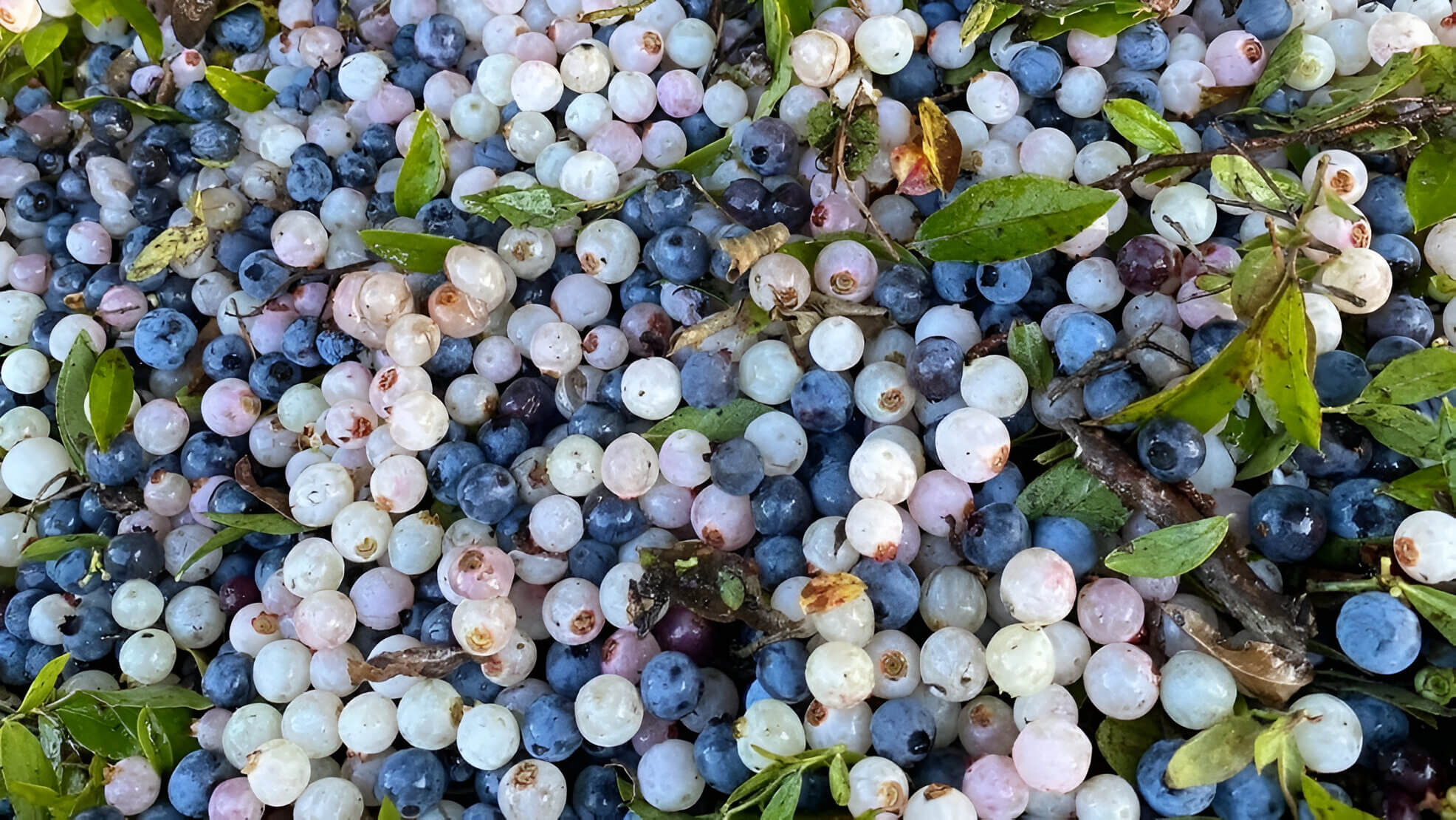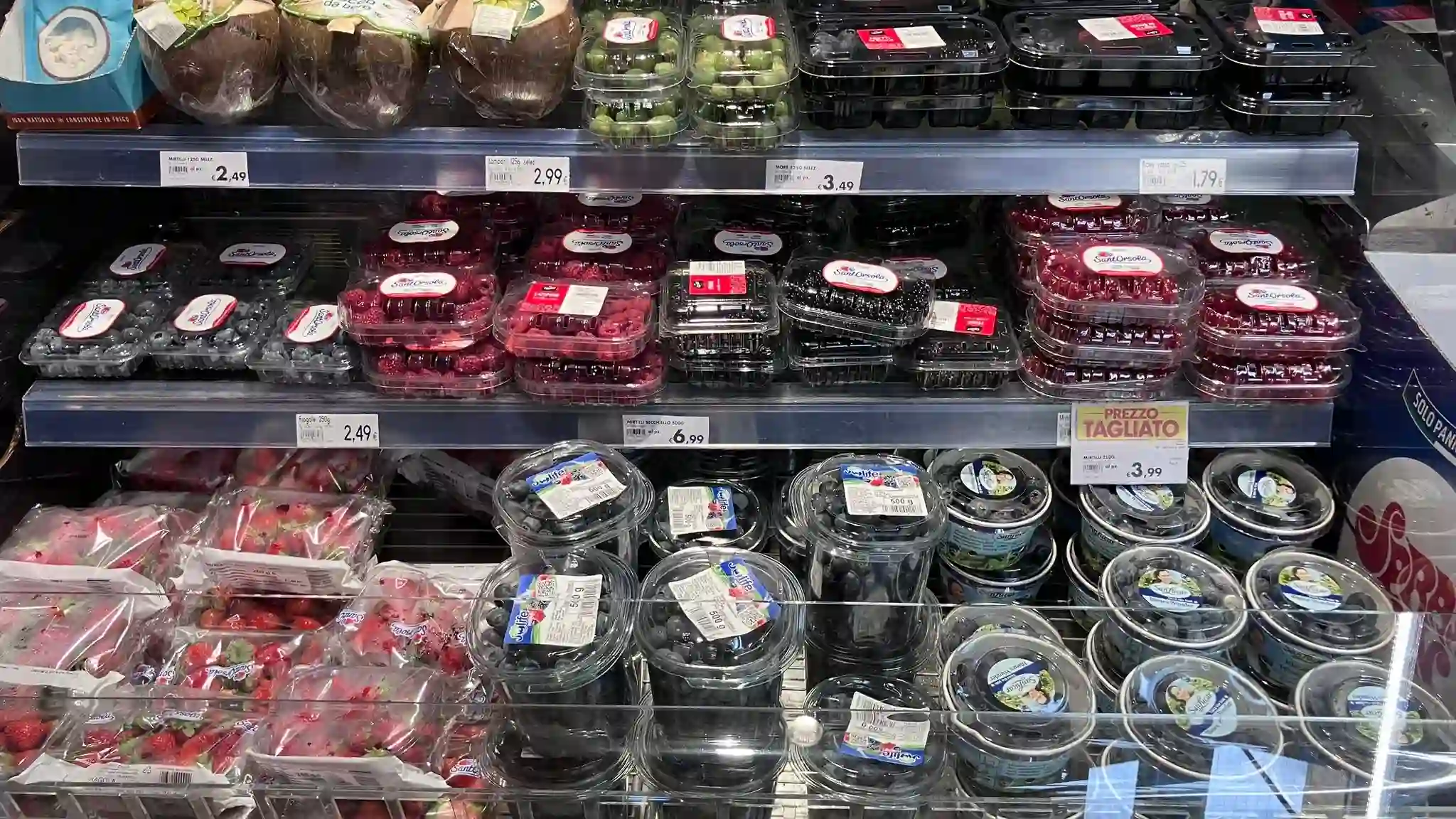The Journal of Jilin Agricultural University on February 5, 2021 published online the 2020 annual report on China's blueberry industry. Using statistics collected from blueberry production regions of China, the report summarized the blueberry production areas for fresh blueberry production and price trends throughout 2020, as well as analyzed the new development trends of China's blueberry industry.
IN 20 YEARS FAST-GROWING PRODUCTION AND AREAS
According to the report, commercial production of blueberries in China began in 2000. Two decades later, in 2020, the total plantation area of blueberries reached 66,400 hectares, with a total production of 347,200 tonnes and production for fresh consumption of 234,700 tonnes.
There are seven Chinese provinces with production areas of blueberry exceeding 4,000 hectares: Guizhou (15,000 hectares), Liaoning (7,800 hectares), Shandong (7,333 hectares), Sichuan (6,667 hectares), Anhui (6,667 hectares), Yunnan (5,000 hectares) and Jilin. (4,000 hectares). In addition, there are nine Chinese provinces whose total production for the year exceeded 10,000 tonnes, namely Guizhou (85,000 tonnes), Sichuan (50,000 tonnes), Anhui (40,000 tonnes), Liaoning (35,000 tonnes), Shandong (33,000 tonnes), Yunnan (30,000 tonnes), Jilin (15,000 tonnes), Hubei (11,000 tonnes) and Jiangsu (10,000 tonnes).
In terms of production for fresh consumption, each province differs in terms of varieties planted and production targets, so that the proportion for fresh consumption varies significantly from one province to another. For example, in Guizhou province, the main variety planted is the Rabbiteye variety, and only 30% of the production of blueberries is for the fresh market.
In recent years, Sichuan and Anhui have seen a rapid development of the No. 1 variety of blueberry, which is largely grown for further processing to produce food supplements, and has a yield for the fresh market of 60%. In contrast, in Shandong, Liaoning and Anhui provinces, the fresh product accounts for almost all the production of blueberries.
GREENHOUSE PRODUCTION FOR EARLY RIPENING
The report analysed year-round price trends for Chinese-grown blueberries , showing that prices started high at the beginning of the year and then gradually declined in the latter part.
The period from the beginning of March to the beginning of April saw the highest prices of the year, and prices remained fairly high from the beginning of April to mid-May. From the second half of May onwards, prices were relatively low, reaching their lowest point in July.
The supply of high quality, early maturing varieties of fresh blueberries has been largely due to theuse of solar greenhouse and multi-tunnel cultivation methods. These are currently two of the most important cultivation methods used in the blueberries growing regions of northern China.
According to the report, by the end of 2020, the total area of solar greenhouses for blueberries had reached 2,010 hectares, with an output of 15,185 tonnes. Liaoning Province ranked first in solar greenhouses, accounting for 63% of the total national greenhouse area and 56.6% of the corresponding output.
Shandong Province ranked second in this category, with 27% of the national area of solar greenhouses and 32% of production. The total national growing area of blueberries in polytunnels reached 705 hectares, with an output of 7,510 tonnes.
Shandong was also number one in the multi-tunnel category, accounting for 66.6% of the total national area and 71% of the production of blueberries grown in multi-tunnels. Liaoning came second, with an area share of 17.7% and a production share of 20%.
VARIETAL COMPOSITION HAS BEEN OPTIMISED, WITH IMPORTANT DIFFERENCES BETWEEN NORTH AND SOUTH
In terms of cultivars grown, the crop composition in southern China has diversified, while in the north it has stabilised and further optimised. In the last decade, the breeding of blueberry Southern Highbush cultivars has been unusually active worldwide, while the planting of Northern Highbush cultivars has lagged behind.
In the blueberry growing regions of southern China, the main cultivar families of blueberry currently grown are Southern Highbush, Rabbiteye and Northern Highbush. Southern High bush cultivars grown in these areas include O'Neal, Misty, Emerald, Jewel, Star, Camellia, No. 1 Blueberry, Brigitta, Bluerain, and the L and OZ series planted by foreign companies, among others.

Rabbiteye cultivars include Brightwell, Wonong, Climax, Baldwin, Gardenblue, Woodard and Powderblue. Northern Highbush cultivars, whose characteristics help to make the most of the climate of the high altitude northern regions, include Reka, Bluegold, Bluecrop and Northland.
Meanwhile, in the blueberries growing regions of northern China, varieties of blueberry are maturing and stabilising after 10 years of optimisation. Varieties grown outdoors in the Liaodong and Jiaodong peninsulas include Reka, Northland, Duke, Zuipo, Bluecrop, Legacy and Liberty.
In the Changbai mountain growing region, the main varieties are Reka, Bluegold, Duke, Northland and Zuipo. The main greenhouse varieties grown in the north include Duke, Bluecrop, Legacy, O'Neal, Emerald, Misty and H5.
MULTINATIONALS INVEST IN CHINA
According to the report, by 2020 more than 25 multinationals had invested in increasing the production of blueberries in China. In 2015, multinationals accounted for only 1% of China's fresh blueberries industry; this figure has now risen to 10%.
An important feature of large-scale plantations by multinational growers is that they target the fresh fruit market, using their own branded varieties and highly efficient substrate growing techniques.
Substrate cultivation has emerged as a new method in China and has several advantages, such as rapid growth (with the first high-yielding crop after only one year), integration of water and fertiliser to allow precise application of fertiliser, ease of standardised production and reduced labour requirements.
However, the cultivation medium also has its limitations; for example, it requires a high level of technical and managerial knowledge on the part of workers and uses large volumes of fertiliser, so it has faced some challenges in terms of implementation and development.
VARIETIES FOR INDUSTRIAL PROCESSING.
For example, the premium variety No. 1 Blueberry grown by the Zhejiang Blueberry Technology Corporation has a number of advantageous qualities: it is highly adaptable to a variety of soil conditions, easy to grow, produces a high and reliable yield, is easy to process and contains a high level of anthocyanins (natural pigments known for their health benefits). It has become a pioneer variety focused on industrial processing, revitalising rural areas in southern China and contributing to the economic growth of farming families. By the end of 2020, the total cultivation area of the variety of blueberry No. 1 reached 8,867 hectares, of which 7,300 hectares were newly added in 2020, and the total production reached 22,000 tonnes.
Source: Blueberries Consulting
Blueberries Consulting is part of the global network of Italian Berry












